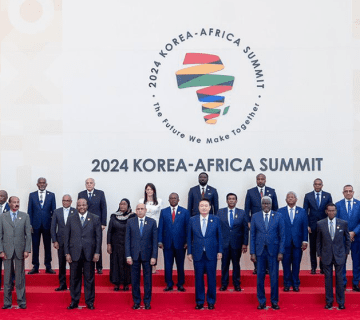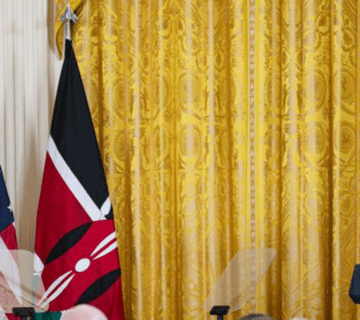South Sudan is still in dire need of humanitarian assistance. Half of the population is experiencing severe hunger and is at risk of starvation caused by the ongoing climate crisis. The troubling situation is already spiralling out of control because of the impact of climate change compounded with other factors including violence and the global food crisis which calls for climate urgency measures.
According to a UN report, 6.6 million people are severely famished, with an additional 2.2 million at risk of starvation. 1.4 million children have been identified as malnourished and an estimated overall 7.7 million people are experiencing food shortages. It is also projected that there will be an increase of up to 9.4 million people who might need humanitarian assistance in 2023.
Climate Change as a Threat Amplifier
Weather and climate extremes partly caused by global warming are likely to become more severe and frequent, resulting in consequences for peace and security. Climate change has completely disrupted weather patterns resulting in extreme floods, drought, and displacement. Since 2019, the country has struggled with record floods and drought, especially in the Eastern part. December 2022 marks the fifth year of consecutive severe flooding. This has put persistent pressure on affected communities driving displacement and overwhelming local coping mechanisms, preventing people from returning to their homes. The affected people are mostly in Lakes, Warrap, Upper Nile, Northern Bahr el Ghazal, and Jonglei. According to the United Nations Office for the Coordination of Humanitarian Affairs (OCHA), the most affected regions are along river Nile, Lol rivers, and Sudd Marshlands in which over 835,000 people have been affected and 800,000 livestock have died. Moreover, the geographical position of South Sudan renders it especially susceptible to flooding.
Due to poor river management, the Nile, amplifies downstream in the upper Nile basin found in South Sudan, leads to intensified local precipitation, further compounding the flood risks in the country. Seasonal and erratic flooding is typical in the country but the 2021 flooding was one of the worst. Record-breaking droughts and extreme heat have led to internal displacement and greatly affected conflict dynamics in vulnerable communities due to poor governance and in turn, exacerbated political instability.
Climate change indirectly increases risk of conflict by amplifying existing social, economic and environmental factors in the sense that there is a huge disproportion between the population and access to food and water. It gives opportunity to terrorist and militia groups to exploit the population. Rebel forces evolved out of community militias that had formed in earlier times to resist outside cattle herders. Militarisation has been increasing among the herders defending their surviving cattle and the host community defending their land. Jonglei is wrecked with devastating intercommunal conflict following a brutal civil war. In South Sudan, the dominant political elite comes from pastoral communities (Dinka and Nuer groups) rather than farming communities, who hold power across the Sahel North of South Sudan. Arms flow directly from political elites to the cattle herders on the ground because of the easy access to state resources, state power, and guns, therefore, getting an upper hand during the conflict.
Migrants who have been displaced previously and incoming migrants are known to be involved in violent clashes with their host communities (resident farmers) and insurgents. The tensions around central Equatoria spiked in 2021 between local Equatorians and migrant Dinkas because the local rebel group, the National Salvation Front, refused to sign the 2018 peace deal with the South Sudanese government. In 2022, fighting near the South Sudan-Uganda border broke out due to an additional number of flood-displaced herders.
Below-average rainfall endured in the Horn of Africa in 2020 resulted in the historic prolonged drought that came after the 2019 locust outbreak exacerbating agricultural strains and ethnic tensions. This is because intensified floods and drought render land unusable. The wiping out of pasture land, destruction of homes, loss of cattle, and cattle raids remain the only outcomes. The already vulnerable country is facing a multitude of other setbacks: rising poverty, deteriorating living standards, long-term effects of loss of education, destruction of farmlands and essential infrastructure, risk of diseases, and environmental degradation in addition to a further scarcity of building materials. These factors led to an increase in the costs of food and fuel disrupting the country’s progress.
The International Community’s Response to the Humanitarian Situation
The international community and donors have put in efforts to deal with the current food crisis and the resulting security challenges, through various humanitarian operations. However, it is proven difficult with time to achieve. The conditions of delivering humanitarian aid have been worsened by conflicts, multiple instabilities, access constraints, and insufficient funding.
The international community and other organizations are however stepping up to ensure the mechanisms and framework in place can deal with the ongoing crisis. First, Climate Risks and Early warning systems, which alert populations on dangerous climates, as launched in COP21. Second, 1.7 billion UN appeal and loss & damage funds during the recent COP27, and the IMF commitment to emergency financing in South Sudan will help address food insecurity.
Conclusion
South Sudan bears all climate-driven forms of insecurity driven by human activities which pose a great risk to human survival. Food insecurity and violence call for immediate intervention by the international community. The international community, however, has not been meeting their commitments to assisting South Sudan and Africa in General, especially in the Horn of Africa which has been adversely affected because of the limited resources compared to the population. Leaving these threats unmitigated could lead to a global crisis and possible mass exodus of persons through migrations and conflict. Therefore, states and international actors should work on diffusing some of these risks and ensuring sustainability.
Recommendations
In South Sudan, the emphasis should be on efforts to clarify land rights to Equatorian people whereby land that would presumably be left idle would be used for food production by both the local and foreign agricultural companies and protection for the displaced; these could include: assistance in migration procedures, protecting farmers and the host communities, and designating a specific area for migrants and their cattle.
The necessary authorities can organise workshops and conferences where peaceful dialogue can take place for easing political tension between the displaced and the host. The donors and aid groups should pre-position assistance for the misplaced and help them return home. Assistance could be in the form of manpower (experts), funding, and provision of essential services and needs. A strict follow-up to ensure accountability of resources to avoid loss through corruption by certain government authorities. Also, increase funding for climate adaptation and resilience in conflict-affected areas taking into account the most vulnerable like children. Finally, encourage climate activism to propel climate security up the agenda of the UN Security Council which struggles due to scepticism from some powerful members who are among the biggest countries responsible for the bulk of historic carbon emissions.
Stacy Martin is a Research Intern at the HORN Institute
Photo: Women and children wait to be registered prior to a food distribution carried out by the United Nations World Food Programme (WFP) in Thonyor, Leer state, South Sudan, February 26, 2017. Photo Credit: Reuters/Siegfried Modola
The contents of this article are copyright of © The HORN Institute 2022. All rights reserved. Any redistribution or reproduction of part or all of the contents in any form and for whatever reason is prohibited. You may use the content of this article for personal reasons, but acknowledge the author and cite the website as sources of the material.



